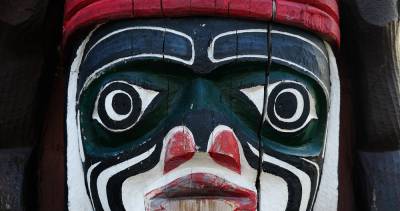Declining Chinatown food businesses neglected by Vancouver civic policies, report finds
Amid Vancouver's ongoing real-estate debates, Chinatown is one of Vancouver's neighbourhoods that much concern has been raised about.
This month, the Hua Foundation, a non-profit youth organization based in Chinatown, released a report that takes an in-depth look at the drastic change in Chinatown retailers in recent years.
More specifically, the Vancouver Chinatown Food Security Report, authored by the foundation's Chinatown food security coordinator Angela Ho and former coordinator Alan Chen, points out how critical oversights—holdovers from historical systemic discrimination against Asians—by civic policies play a role in the decline of Chinese cultural businesses in the area.
Large losses
Between 2009 and 2016, the report states that almost 50 percent of Chinatown's cultural food assets—such as greengrocers, fishmongers, barbecue meat stores and butcher shops, Chinese dry good stores, and traditional Cantonese bakeries and restaurants—were lost.
One of the biggest drops was among food-service retailers which shrank from 36 in 2009 to 16 in 2016, a loss of 20 businesses.
Although there were 33 new food-service retailers that opened up in the same time frame, the report notes that these businesses "tend to cater to higher income brackets and differ in terms of cultural specificity and/or orientation compared to the traditional Cantonese food service retailers that were in operation in 2009".
Another major shift has been the expansion and proliferation of Chinese businesses throughout the Lower Mainland, beyond Chinatown, due to an increase in Chinese immigrants after the Second World War.
For instance, the report notes that even back in 1981, 10 Chinese greengrocers were located in Chinatown (three percent) while in 324 Chinese greengrocers (97 percent) existed outside of Chinatown.
In addition to what the report states, neighbourhoods such as Kerrisdale and Oakridge, and suburbs such as Richmond, have seen significant growth in the number of Chinese businesses. Furthermore, businesses which serve a wide variety of customers including Chinese communities, other Asian communities, and mainstream shoppers, such as T&T Supermarket, have also arisen.
Meanwhile, Chinatown's rapidly rising property values have exerted pressure on the area's businesses which provide affordable or culturally specific services. For instance, the report states that Chinatown land values rose from $167 million in 2001 to $564 million in 2013.
Consequently, this dramatic economic shift in turn displaces low-income residents and Chinese seniors.
What's more, the report adds, younger generations may not have the capacity, knowledge, or interest in continuing their family's traditional businesses.
A history of exclusion
The report traces the formative history of this cultural food system.
Due to discrimination, the authors explain, many Chinese immigrants worked in agricultural production due to being prevented from entering wage labour, with Chinese immigrants producing and distributing up to 90 percent of B.C.'s vegetables by the 1920s.
However, as non-Chinese farmers sought to limit what they perceived as an economic threat, the B.C. government passed the Produce Marketing Act of 1927 to regulate the price and volume of farm produce allowed on the market, which prevented Chinese farmers and sellers from determining these factors themselves. Consequently, Chinese farmers began to sell their produce to Chinese wholesalers, greengrocers, and roadside farms instead.
Consequently, a Chinese food distributed system developed separate from the B.C. mainstream and still exists independent of Vancouver's newer local food movement network of farmers markets, Community Supported Agriculture, and other institutions. Also, B.C.'s Chinese food distribution system isn't currently regulated, the report states, and supply and demand is determined by the marketplace.
Civic policies and "culture"
The study also analyzed five civic documents related to food policy in Chinatown: the Vancouver Food Strategy, Chinatown Neighbourhood Plan and Economic Revitalization Strategy, Downtown Eastside Local Area Plan, Downtown Eastside Social Impact Assessment, and Healthy City Strategy.
The report observes that these documents recognize fields such as architecture or the fine arts as culture but not food.
Moreover, the report also points out that cultural food assets aren't recognized as contributing to local food security.
"The rapid, recent loss of cultural food assets in Chinatown is, in part, a manifestation of municipal policy that falls short of providing meaningful recognition and support for systems that exist outside of formally recognized structures," the authors state.
Although the municipal policies purport to be inclusive and promote diversity, the report claims that they exclude, overlook, or fail to recognize the cultural role that food plays in communities.
For instance, the authors point out that one of the objectives of the Vancouver Food Strategy is to "improve access to healthy, affordable, and culturally diverse food". However, the authors explain that although food is recognized by policies, it is separated from culture. In other words, when culture is the primary focus, food is excluded from discussion and not viewed as integral to culture.
"We believe that this is a factor that has contributed to the rapid loss of cultural food assets in Chinatown," the report states.
Hua Foundation executive director Kevin Huang added how the food movement continues to overlook Chinese Canadians.
“Shopping at neighbourhood greengrocers or fishmongers are legitimate contributions to the local food system," he stated in a news release, "however, these forms of participation are underrepresented and not often acknowledged within the local food movement here in Metro Vancouver.”
For the future
The report offers recommendations for how local cultural food assets can be improved.
The report supports the City of Vancouver's investigation into including culture as a fourth pillar of sustainability, as an opportunity to explore how food contributes to culture.
The authors also recommend specifically recognizing and including cultural food assets in the Vancouver Food Strategy, with specific measures taken to increase their resilience.
In addition, they point out that the Downtown Eastside Local Area Plan seeks to ensure that low-income residents are able to access affordable goods and services nearby, including culturally appropriate food and retail businesses. The Chinatown report authors recommend that this objective should be integrated into the Vancouver Food Strategy, and applied to other neighbourhoods as well.
The report also recommends further research, education, and public awareness of how systemic racism and exclusionary policies have had an impact on our food systems.
“We hope that this report will draw critical attention to the state of cultural food assets in Chinatown that continue to serve the area’s low-income and senior populations, and highlight the role that culture plays in fostering an inclusive, just, and sustainable food system here in Vancouver,” Ho stated in a news release.















Comments